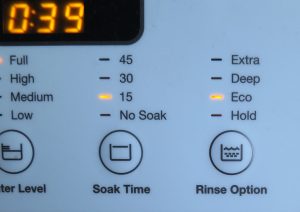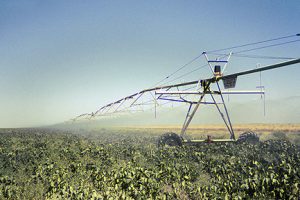| Average Australian home | $1000 a year/700 litres a day* |
|---|---|
| Smart renter | $580 a year/400 litres a day* |
| Very smart renter | $190 a year/130 litres a day* |
*These figures will obviously vary depending on where you live and how the charges are split between the landlord and renter. This was calculated based on a combined cost of $3.77 per litre for water and sewage and a national 2010 average of 282 litres of water per person per day. The above figures also assume that as a renter, you do not pay service charges as is the case in some states (including ours).
After the millennium drought, Australians shouldn’t need to be reminded of the importance of being smart with water but as a refresher, here’s some important reasons:
- Rainfall has always been sporadic in most of Australia and climate change is increasing this problem [1]. As an example, Perth has seen a decrease of 3mm per year in rainfall since the 1970s and dam inflows have dropped to under 17% of what used to be the average [2].
- Water treatment and movement is a major user of energy [3]. The same is true in reverse; coal, gas and nuclear power plants use large amounts of water and they alone accounted for 41% of the total water use in the US in 2015 [4]. Renewables use significantly less water [5].
- Due to increasing pressures on water supplies, water is likely to become more expensive and restrictions will occur again in the next drought.
- With the right habits and tools in place, a household can comfortably live on 50-150 litres of water per person, even in a rental.
We‘ll cover some easy ways that renters can be a water wise household covering mostly indoor use. Next to each section is a percentage of how much water this uses in a typical household.
Bathroom (43%)
- To see if you already have a water saving shower head, hold a jug under the shower and turn the water on full until the jug fills while another person times how long it takes. Divide 60 seconds by the time it takes to fill the jug and multiply the litres of water by this number to get the litres/min rating of your showerhead.
- Any shower head that uses 7.5 litres/min or less can be considered to be a water saving shower head. If you don’t have one, a water saving shower head can be purchased for as little as $30 (or sometimes given away under showerhead exchange programs) and can be easily installed as a renter. A water saving shower head will work in any mains or pump pressure property as long as you don’t have an older instant hot water heater (see notes below) [6].
- Keep the old shower head to reinstall when you leave unless you have agreed with the landlord to permanently change it.
- Stick to 5 minute showers which means that shaving and brushing your teeth are best done in front of the bathroom sink. You may need a timer at first if you’re not used to 5 minute showers but it becomes easy in no time.
- Baths are a luxury so treat them as such. A foot bath is a nice low water alternative.
- Don’t leave the tap running when shaving or brushing your teeth.

Toilet (14%)
- If you have a dual flush toilet, use the low flush option where appropriate.
- Older toilets can use 12 litres a flush or more. There is a simple fix that renters can use to reduce this to 6 litres a flush.
Laundry (16%)
- Wash clothes only when necessary; if it doesn’t look dirty or smell dirty, it isn’t dirty which means it doesn’t need to be washed. This also saves you time and makes your clothes and washing machine last much longer.
- Clothes can be aired to freshen them up.
- Only wash if you have a full load.
- The above tips should already save you a lot of water so you can keep your current washing machine going until it wears out.
- If you are buying a replacement washing machine, look for one that is water efficient and can wash in cold water (e.g. doesn’t have an internal heater). If the washing machine has a hot and cold water input and a cold wash only setting, than you can wash in cold water.
- Whether it’s a front loader or top loader is irrelevant unless you have specific needs; how much water the machine uses per wash is more important.
- We have a 5.5kg top loader that uses 70 litres for a full load on the eco setting which is equivalent to a 5.5kg front loader. Our washing machine was cheaper to buy and we can reuse clean water (shower warm up water, for example) by pouring it into the top of the machine which can’t be done with a front loader.

Kitchen (5%)
- A dishwashing stick can be used to wash dishes as you go, avoiding the need to fill the sink.
- Dishwashers and handwashing seem to use a similar amount of water so it comes down to personal preference.
- We like hand washing as it is easy when you wash as you go and let dishes air dry, there’s no additional energy used, you can get by if you can’t find a rental with a dishwasher and you don’t need extra plates, bowls, etc. to use while the machine fills with dirty dishes.
- If you have a large designer sink, put a smaller container or wash bucket inside so you don’t need to use so much water to fill the sink.
Outdoor use (22%)
- If you have a car, wash it at a car wash where the water is recycled or bucket wash at home.
- If you want to tidy up paths, driveways or concrete areas, use a broom instead of a hose.
- Pools and spas are massive water users (and a lot of maintenance) so avoid signing up for a property with either of these though you are much less likely to encounter them in a rental. Better to use public pools and spas instead.
- See portable wicking beds for a cheap and simple renters garden that uses half the water of a conventional garden.
Extra tips

“Travelling irrigator” by NSW DPI Schools program is licensed under CC BY-NC-SA 2.0 This section is an excerpt of the original.
- Our home water use is just a small part of all the water each of us needs. Becoming an energy smart household, reducing food waste, growing your own food and learning to live comfortably on less goods and fossil fuels are also important ways to reduce our water use.
- As of 2010, each Australian used 2520 litres of water per person per day when agriculture and other industries were included [7]. This does not include water used to produce goods and services for Australia overseas.
- Make sure water leaks are promptly fixed. If you suspect a leak and can’t find it, shut off all taps and stop any water use in the house for say an hour and record the water meter readings at the start and end of this time period. The meter reading should not change.
- Water bills often show your consumption with a corresponding chart that allows you to see how many litres per day you are using per person in your home.
- To work out your water consumption per person manually, use your last bill and divide the number of Kilolitres by the number of days for the billing period and the number of people in your household and then multiply this number by 1000 to get the litres per person.
Adopting these water wise ideas as a smart renter shouldn’t cost any more than $50 and a few hours of your time, yet will save you around $400 a year compared to the average Australian home. Aim for 150 litres per person per day or less unless you are growing 50% or more of your veggies. To cope with future drought scenarios and to knock even more off your water bill, see Very water wise smart renter and Greywater for renters.
Further Reading:
[1] https://www.csiro.au/en/Research/OandA/Areas/Oceans-and-climate/Climate-change-information [2] https://theconversation.com/is-perth-really-running-out-of-water-well-yes-and-no-90857 [3] https://weather.com/wunderground/news/news/energy-use-by-water-supply [4] https://www.watercalculator.org/water-use/the-water-footprint-of-energy/ [5] https://www.watercalculator.org/water-use/electricity-water-footprint/[6] Some gravity fed hot water units may not provide enough pressure for a water saving shower head to work properly. You’ll know if you have a gravity fed hot water system if you live in an older property and you need to turn the hot tap many more times than the cold tap to get your shower temperature right. If you live in such a property, don’t worry about your shower head because it’s probably not using lots of water anyway.
If you have an instant hot water heater (e.g. it doesn’t have a storage tank), keep in mind that these are designed to work only when there is a pre-determined minimum flow of water. Newer units work with water saving shower heads (we have tried this twice with no problems) but older units may need a higher flow shower head to work properly. Here’s a simple procedure to work out the minimum flow for an instant hot water heater if you have one:
https://environmentvictoria.org.au/resource/showerheads-instantaneous-gravity-fed-hot-water-systems/
[7] https://www.abs.gov.au/ausstats/abs@.nsf/Lookup/by%20Subject/1370.0~2010~Chapter~Water%20consumption%20per%20person%20(6.3.3)